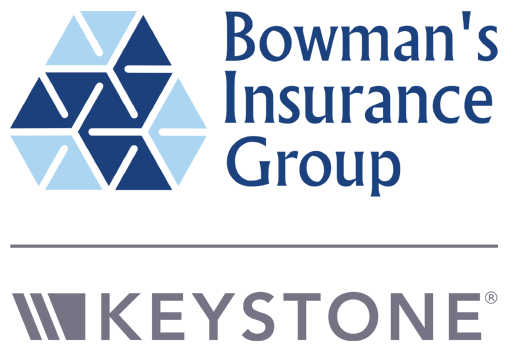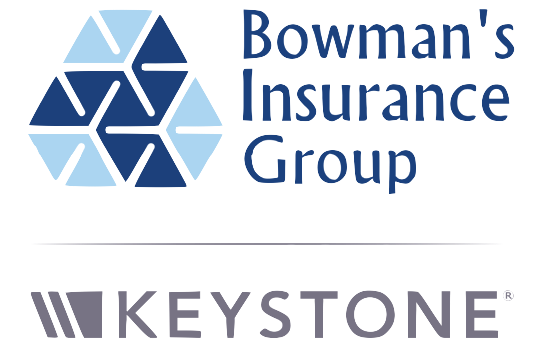Pennsylvania Non-Profit & Church Insurance

See How We're Different:
Call Us: 717-838-5464
Top 3 Recommended Policies
Index
The Economic Importance of Nonprofits in Pennsylvania
Understanding the Insurance Needs of Nonprofits
Church Insurance: Navigating Unique Challenges
Regulatory Environment and Taxation Impacting Nonprofits and Insurance
Strategies for Managing Insurance Costs and Risks
The Future Outlook for Pennsylvania Nonprofit and Church Insurance
Contact Us
Nonprofit organizations and churches play a vital role in Pennsylvania’s social fabric and economy. From providing essential community services to supporting vulnerable populations, these entities operate in a complex environment that requires careful management of risks and resources. One critical area that often raises questions is insurance—how nonprofits and churches protect themselves, manage costs, and navigate regulatory challenges. This comprehensive guide explores everything you need to know about nonprofit and church insurance in Pennsylvania, backed by the latest data and expert insights.
The Economic Importance of Nonprofits in Pennsylvania
Nonprofits are a powerhouse in Pennsylvania’s economy, contributing significantly to both social welfare and economic activity. In 2022, Pennsylvania’s nonprofit establishments generated an impressive $139.8 billion for the state’s economy, with $66.3 billion coming directly from their operations. This highlights the sheer scale and influence these organizations have beyond their charitable missions.
Philadelphia, in particular, stands out as a hub for nonprofit activity. According to The Pew Charitable Trusts, nonprofits in Philadelphia reported $48.5 billion in total revenue, accounting for more than a third of the city’s gross domestic product. This underscores how deeply nonprofits are woven into the city’s economic and social ecosystem.
With nearly 175,000 people employed by nonprofits in Philadelphia alone—representing 30% of the city’s private sector jobs—these organizations are not only service providers but also major employers. This employment footprint further emphasizes the need for robust insurance coverage to protect their workforce and assets.
Moreover, the impact of nonprofits extends beyond mere employment figures; they play a crucial role in fostering community engagement and social cohesion. Many nonprofits focus on addressing local issues such as poverty, education, and health care, often filling gaps left by government services. For instance, organizations dedicated to youth mentorship and education provide invaluable resources and support to underprivileged children, helping to break the cycle of poverty and create opportunities for future generations. This community-centric approach not only enhances the quality of life for residents but also contributes to a more stable and prosperous society.
Additionally, the economic contributions of nonprofits are further amplified through their collaborations with local businesses and government entities. By partnering on various initiatives, nonprofits can leverage resources and expertise to tackle complex social issues more effectively. These collaborations often lead to innovative solutions that benefit the entire community, such as job training programs that equip individuals with the skills needed for the evolving job market. As a result, the symbiotic relationship between nonprofits and other sectors not only bolsters the economy but also fosters a spirit of cooperation and shared purpose among diverse stakeholders.

Understanding the Insurance Needs of Nonprofits
Nonprofits face unique risks that require tailored insurance solutions. Unlike for-profit businesses, nonprofits often operate with limited budgets and rely heavily on donations and grants. Insurance policies must therefore balance comprehensive coverage with cost-effectiveness.
Common types of insurance for nonprofits include general liability, property insurance, directors and officers (D&O) liability, and workers’ compensation. These protect against claims ranging from bodily injury on premises to lawsuits alleging mismanagement or breach of fiduciary duty.
Moreover, nonprofits that serve vulnerable populations—such as youth, seniors, and individuals with disabilities—often face heightened scrutiny and potential legal exposure. As noted by AJG United States, certain classes of nonprofits working in human services are increasingly becoming targets for larger settlements. This trend makes having adequate liability coverage crucial.
In addition to the standard insurance types, nonprofits should also consider specialized coverages that cater to their specific missions. For instance, nonprofits that organize events may benefit from event cancellation insurance, which can protect against financial losses due to unforeseen circumstances such as extreme weather or public health emergencies. Furthermore, cyber liability insurance is becoming increasingly important as nonprofits digitize their operations and handle sensitive data, making them potential targets for cyberattacks. This insurance can help mitigate the financial fallout from data breaches and other cyber incidents.
Impact of Rising Insurance Costs
Insurance premiums for nonprofits have been rising, driven by factors such as increased litigation and claims severity. This trend is particularly pronounced in sectors like healthcare and social services. For example, nonprofit hospitals in Pennsylvania are under growing scrutiny regarding their tax-exempt status and community benefit obligations, which can affect their financial stability and insurance needs.
Additionally, a 2005 study by the
Center for Rural Pennsylvania highlighted that small businesses offering
health insurance saw annual cost increases of 10-20%, with over a third experiencing hikes exceeding 20%. While this data is somewhat dated, it reflects long-term upward pressure on insurance costs that nonprofits must navigate carefully. The rising costs can strain already tight budgets, forcing nonprofits to make difficult decisions about which coverages to prioritize. In some cases, organizations may need to explore alternative funding sources or partnerships to help offset these expenses, ensuring they can maintain essential services without compromising on safety and compliance.
Church Insurance: Navigating Unique Challenges
Churches and religious organizations face their own set of insurance challenges. Beyond general liability and property coverage, churches must consider risks related to abuse claims, sexual misconduct, and other sensitive issues. These exposures have led to sharply rising insurance rates in recent years.
According to U.S. News & World Report, increased litigation and higher settlement amounts have created a “perfect storm” driving church insurance premiums upward. Some congregations have faced policy cancellations or significant premium hikes, forcing them to reassess their risk management strategies.
Why Are Church Insurance Rates Increasing?
Several factors contribute to rising church insurance costs:
- Litigation Trends: More frequent and costly lawsuits related to abuse and misconduct.
- Claims Severity: Higher settlement amounts increase insurers’ risk exposure.
- Policy Cancellations: Some insurers are exiting the church insurance market, reducing competition.
These challenges mean churches must be proactive in their insurance purchasing, often seeking specialized policies that address their unique risks while managing affordability. Additionally, churches are encouraged to implement comprehensive risk management practices, including training programs for staff and volunteers, to mitigate potential liabilities. By fostering a culture of safety and accountability, congregations can not only protect their members but also demonstrate to insurers that they are serious about minimizing risks.
Moreover, the evolving landscape of technology and social media presents new challenges for churches. With the rise of online services and community engagement through digital platforms, churches must also consider cyber liability insurance to protect against data breaches and online harassment claims. As congregations increasingly rely on technology for communication and outreach, understanding these additional risks becomes essential in crafting a holistic insurance strategy that safeguards both their physical and digital assets.
Regulatory Environment and Taxation Impacting Nonprofits and Insurance
Insurance regulation in Pennsylvania is overseen by the Pennsylvania Insurance Department, which governs the industry’s compliance with state laws. Nonprofits and churches must navigate this regulatory landscape while managing their insurance needs. The department not only ensures that insurance providers adhere to ethical and operational standards but also plays a critical role in consumer protection. This means that nonprofits must stay informed about regulatory updates and changes to avoid potential pitfalls that could affect their insurance coverage and overall operations.
The insurance industry in Pennsylvania is subject to various taxes, including insurance premiums tax, corporate income tax, corporate capital gains tax, and value-added tax, as noted by GlobalData. These taxes can indirectly influence the cost of insurance products available to nonprofits and churches. For instance, the insurance premiums tax can lead to higher costs for policies, which may disproportionately affect smaller nonprofits with limited budgets. Understanding these tax implications is crucial for nonprofits as they strategize their financial planning and resource allocation.
Additionally, nonprofit hospitals have come under scrutiny for their tax-exempt status, with some converting to tax-exempt entities leading to revenue losses for local governments. This dynamic adds complexity to how nonprofits justify their community benefit programs and insurance expenditures. As local governments grapple with budget constraints, the pressure mounts on nonprofits to demonstrate their value through tangible community services. This scrutiny often leads to a reevaluation of insurance policies, pushing nonprofits to seek coverage that not only protects their assets but also aligns with their mission-driven objectives. Furthermore, the evolving landscape of healthcare regulations and the push for transparency in nonprofit operations mean that these organizations must be proactive in their insurance strategies, ensuring that they are adequately covered while also fulfilling their obligations to the communities they serve.

Strategies for Managing Insurance Costs and Risks
Given the rising costs and evolving risks, nonprofits and churches should adopt strategic approaches to insurance management. Key strategies include:
- Risk Assessment: Regularly evaluating organizational risks to tailor insurance coverage appropriately.
- Pooling Resources: Joining insurance pools or cooperatives to leverage collective bargaining power and reduce premiums.
- Loss Prevention: Implementing robust policies and training programs to minimize claims, especially in sensitive areas like child protection and abuse prevention.
- Working with Specialists: Engaging insurance brokers and carriers experienced in nonprofit and church insurance to secure the best coverage.
By proactively managing risks and insurance, nonprofits and churches can protect their missions and financial health more effectively.
In addition to these strategies, it is crucial for organizations to foster a culture of safety and awareness among their staff and volunteers. Regular training sessions on risk management and safety protocols can empower individuals to recognize potential hazards and take preventive measures. This not only reduces the likelihood of incidents but also enhances the overall resilience of the organization. Furthermore, creating a comprehensive incident reporting system can help track and analyze any issues that arise, allowing for continuous improvement in safety practices.
Another important aspect to consider is the review and adjustment of insurance policies on a regular basis. As nonprofits and churches grow and evolve, their insurance needs may change significantly. Conducting annual policy reviews ensures that coverage remains adequate and relevant, particularly in light of new programs, increased membership, or changes in regulatory requirements. This proactive approach can help organizations avoid gaps in coverage that could expose them to unforeseen liabilities.
The Future Outlook for Pennsylvania Nonprofit and Church Insurance
The insurance landscape for nonprofits and churches in Pennsylvania is likely to remain challenging but manageable with the right strategies. Increased scrutiny on tax-exempt organizations and rising litigation risks will continue to pressure insurance costs.
However, the vital role these organizations play in Pennsylvania’s economy and communities—highlighted by their substantial economic contributions and employment figures—means there is strong incentive for insurers, regulators, and nonprofits themselves to find sustainable solutions.
Staying informed about regulatory changes, market trends, and risk management best practices will be essential. For nonprofits and churches, insurance is not just a cost—it is a critical investment in their ability to serve and thrive in an increasingly complex environment.
In addition to traditional insurance products, many nonprofits are exploring alternative risk management strategies, such as self-insurance pools and captives, which can provide more tailored coverage options at potentially lower costs. These innovative approaches allow organizations to retain more control over their risk management processes and can lead to significant savings over time. Furthermore, as the nonprofit sector continues to evolve, there is a growing emphasis on technology-driven solutions that can enhance operational efficiency and improve risk assessment capabilities.
Moreover, the rise of social media and digital platforms has transformed how nonprofits engage with their communities and stakeholders, creating both opportunities and challenges in terms of liability and reputation management. As organizations increasingly rely on online fundraising and outreach, they must also navigate the complexities of cyber insurance to protect against data breaches and other cyber threats. This evolving landscape underscores the importance of comprehensive insurance coverage that adapts to the unique needs of each organization, ensuring they can continue their mission without interruption.
For more detailed insights into the economic impact of nonprofits in Pennsylvania, visit the
Pennsylvania Association of Nonprofit Organizations (PANO).



